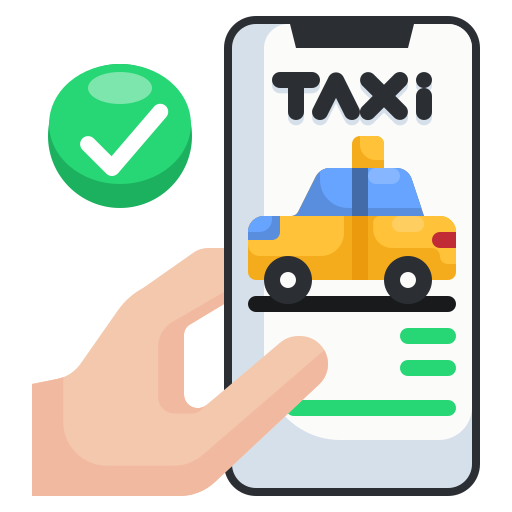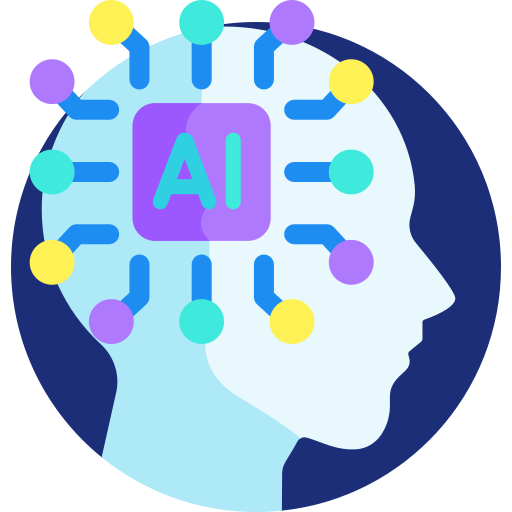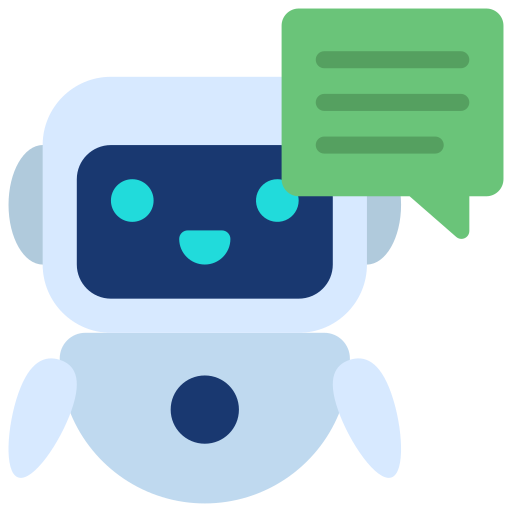The Digital Bodyguard Who’s Also Eyeing Your Desk
Artificial Intelligence (AI) is rapidly transforming cybersecurity by enabling faster threat detection, smarter data protection, and real-time responses to cyberattacks. As businesses integrate AI into their defense systems, cybercriminals are also leveraging AI to craft more advanced, evasive attacks like deepfakes, AI-generated phishing, and self-learning malware. This has created a constant arms race between defenders and attackers. In 2025, AI-driven trends such as Zero Trust security models, breach and attack simulators (BAS), adaptive encryption, and cloud-based threat detection are expected to dominate. With rising threats and stricter data regulations, adopting AI-powered cybersecurity solutions is no longer optional — it’s a necessity for staying safe and compliant in the digital age.
When Bots Become Your Bodyguards
AI-powered security tools are becoming indispensable for businesses and governments alike. These solutions help automate threat detection, streamline incident response, and enhance security analytics. In 2025, the following AI-driven security innovations are expected to dominate:
What If Your System Could See the Hacker Coming?
Traditional security systems rely on predefined rules to detect threats, making them reactive rather than proactive. AI, however, can analyze massive datasets in real time, identifying potential cyber threats before they materialize. Machine learning (ML) algorithms can predict and mitigate vulnerabilities, reducing the likelihood of a data security breach.
Response in 0.001 Secs – Because Hackers Don’t Wait
Security operations centers (SOCs) increasingly rely on AI-powered automation to respond to cyber threats faster than human analysts can. AI can instantly analyze an attack, isolate compromised systems, and neutralize threats, significantly reducing response times.
AI-Enhanced Anomaly Detection
By monitoring network traffic and user behavior, AI can detect deviations from normal activity patterns. These anomalies may indicate unauthorized access, malware infiltration, or other security breaches. Google security tools already integrate AI to flag suspicious activities and provide real-time alerts.
When Hackers Start Using AI Too – Plot Twist
While AI enhances cybersecurity, it also gives rise to new types of cyber threats. Cybercriminals are harnessing AI to develop more sophisticated attack techniques, making traditional security measures obsolete.
Dear User, Please Click Here (Sincerely, A Very Smart Bot)
AI can generate highly personalized phishing emails that are nearly indistinguishable from legitimate messages. These emails exploit human psychology, tricking users into divulging sensitive information, such as login credentials or financial details.
Is That Your CEO or Just a Really Good Deepfake?
Deepfake technology enables cybercriminals to manipulate voice and video, making fraudulent communications more convincing. Attackers can impersonate executives or employees to execute fraudulent transactions or leak confidential data.
The Malware That Learns – Not a Sci-Fi Movie!
Malware powered by AI can autonomously adapt to security defenses, altering its code to evade detection. This makes traditional signature-based antivirus software ineffective, necessitating more advanced AI-driven security solutions.
Trust No One – Not Even Your Printer
Zero Trust Architecture (ZTA) is a cybersecurity model that requires strict identity verification for every person and device attempting to access resources. Unlike traditional perimeter-based security models, Zero Trust assumes that threats may exist both inside and outside the network.
Why Zero Trust is Gaining Traction
With the rise of remote work, cloud adoption, and AI-driven threats, organizations must implement Zero Trust principles, including:
Least privilege access: Employees and devices should only have access to the data necessary for their role.
Continuous authentication: Even authenticated users must continuously verify their identity.
Micro-segmentation: Networks are divided into isolated zones to prevent lateral movement by attackers.
Google Security and Zero Trust
Google security has been at the forefront of Zero Trust adoption with its BeyondCorp framework, ensuring that users and devices must authenticate before accessing corporate resources, regardless of their location.
Real time incidents
1.AI-Generated Phishing Scams Targeting Executives
In early 2025, companies like Beazley and eBay reported a surge in AI-generated phishing attacks aimed at corporate executives. These sophisticated scams utilize AI to craft highly personalized emails by scraping personal data from online profiles, making them more convincing and harder to detect. Such targeted attacks have contributed to an increase in the average cost of a data breach, which rose to $4.9 million in 2024.
2.Deepfake Pornography Scandal Involving Taylor Swift
In January 2024, AI-generated sexually explicit images of singer Taylor Swift were widely circulated on social media platforms, including X (formerly Twitter), Facebook, Reddit, and Instagram. One tweet containing these images was viewed over 45 million times before being removed. The images were created using tools like Microsoft Designer, which were manipulated to bypass content filters. This incident sparked outrage among fans and advocacy groups, leading to discussions about the need for stricter regulations on deepfake content.
3. SugarGh0st RAT Espionage Campaign Targeting AI Experts
In May 2024, a cyber espionage campaign utilizing the SugarGh0st Remote Access Trojan (RAT) targeted U.S. AI experts, including those at organizations like OpenAI. The campaign involved phishing emails designed to deliver the malware, aiming to steal sensitive information from individuals in the AI and tech sectors. This incident highlights the increasing use of AI-driven tools in cyber espionage activities.
4. CrowdStrike Software Update Causes Global IT Outage
In July 2024, a faulty software update from cybersecurity firm CrowdStrike led to a widespread IT outage affecting millions of Windows computers worldwide. The update caused systems to enter a bootloop, disrupting services across various sectors, including banking, healthcare, and emergency response. The incident resulted in an estimated $5.4 billion in losses for Fortune 500 companies.
AI-Enhanced Data Encryption and Privacy Protections
Encryption plays a vital role in securing sensitive data, and AI is enhancing encryption techniques to make them more resilient against attacks. In 2025, expect to see:
AI-Powered Encryption Algorithms
AI is being used to create adaptive encryption models that automatically adjust security levels based on detected threats. These AI-driven models can optimize data protection without compromising system performance.
Homomorphic Encryption
This advanced encryption technique allows computations on encrypted data without the need for decryption. This ensures that sensitive data remains protected, even during processing.
Quantum-Resistant Cryptography
With quantum computing on the horizon, traditional encryption methods may become obsolete. AI is helping develop quantum-resistant cryptographic algorithms that will secure data security in the post-quantum era.
There’s a Hacker in the Cloud – AI’s Got It
As more organizations migrate to cloud-based infrastructures, securing cloud environments is a top priority. AI-driven cloud security solutions will become more advanced in 2025, offering:
Automated Cloud Threat Detection
AI continuously scans cloud environments for anomalies, ensuring that security teams are alerted to potential threats in real time.
Adaptive Access Controls
AI-powered authentication mechanisms analyze user behavior to determine whether access requests are legitimate. If suspicious activity is detected, access permissions can be automatically revoked.
AI-Driven Security Audits
AI assists in conducting real-time security audits to ensure compliance with evolving regulations and security policies. Google security is already integrating AI to strengthen cloud security and protect against data breaches.
Laws, Loopholes & AI – Your Legal Cheat Sheet
Governments and regulatory bodies worldwide are implementing stricter data security laws to address AI-related risks. In 2025, businesses will need to adhere to new regulations, such as:
AI transparency laws: Organizations must disclose how AI processes and protects data.
Enhanced data protection regulations: Stricter compliance measures similar to GDPR and CCPA will be enforced.
AI governance frameworks: Businesses must establish ethical AI policies to prevent bias and misuse.
Non-compliance with these regulations could result in heavy fines and reputational damage, making adherence to AI data security laws a business necessity.
Conclusion
As AI continues to shape the future of cybersecurity, businesses and individuals must remain vigilant. From AI-driven security solutions to breach and attack simulator technologies, proactive measures are essential to mitigate risks. The adoption of Google security, data security, and AI data security best practices will be crucial for organizations to protect their digital assets in 2025 and beyond. By staying ahead of emerging threats and leveraging AI-powered cybersecurity solutions, organizations can ensure robust data protection and maintain trust in an increasingly digital world.
For more information contact : support@mindnotix.in
Mindnotix Software Development Company


 AI-Taxi App
AI-Taxi App AI-Food App
AI-Food App AI-Property Mgmt App
AI-Property Mgmt App AI-CRM
AI-CRM AI-Fantasy App
AI-Fantasy App
 Web Development
Web Development App Development
App Development Business & Startup
Business & Startup Hire Developer
Hire Developer
 Digital Marketing
Digital Marketing Lead-generation
Lead-generation Creative Agency
Creative Agency Branding Agency
Branding Agency Augmented Reality
Augmented Reality Virtual Reality
Virtual Reality Internet of Things
Internet of Things Artificial Intelligence
Artificial Intelligence Blockchain
Blockchain Chatbot
Chatbot



